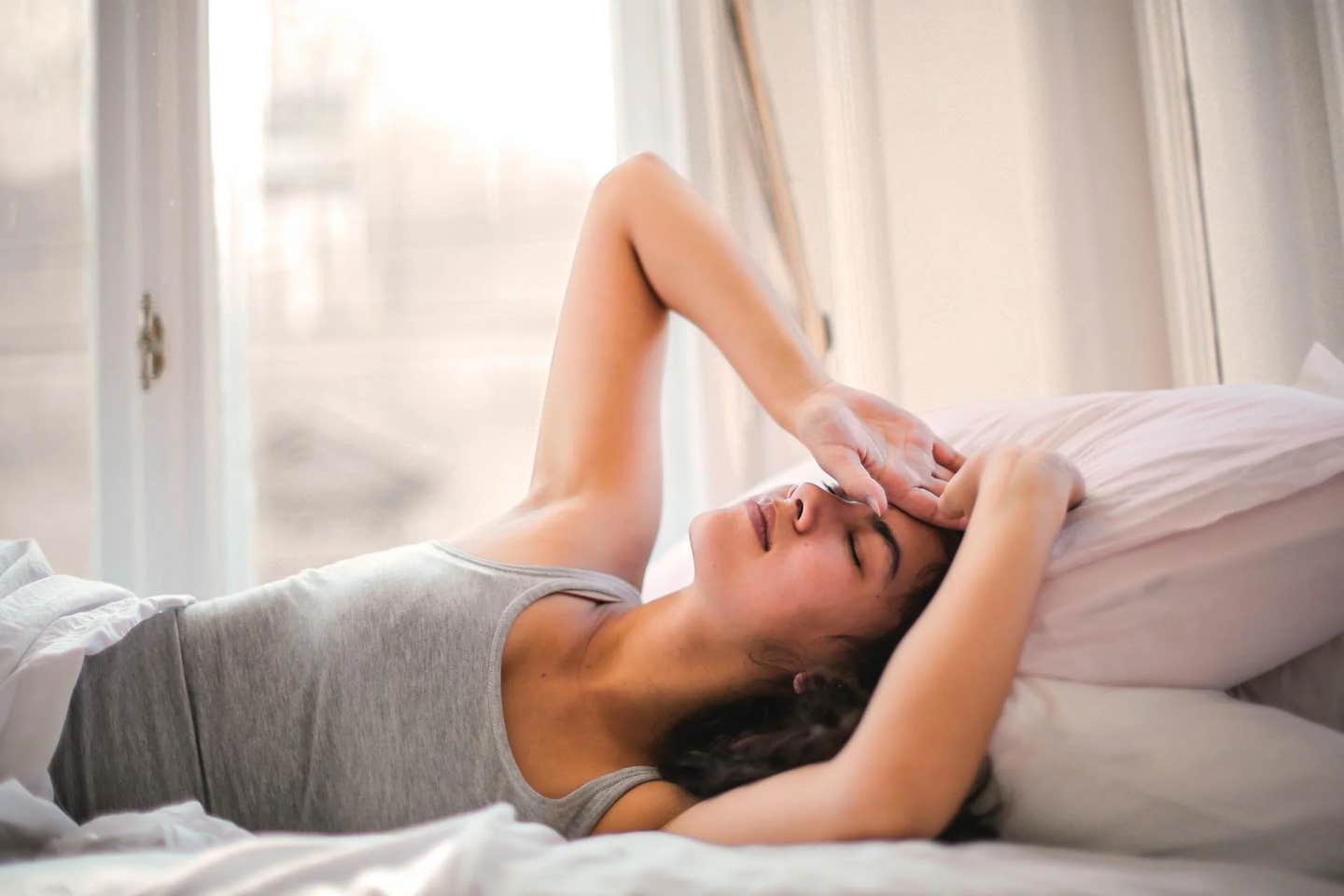Scientists reveal the perfect temperature to increase sleep and decrease stroke risk
Per to the Centers for Disease Control and Prevention, an estimated 35% of US adults regularly miss out on the recommended amount of sleep

[Oct. 27, 2023: Peter Dizikes, MIT]
Getting more sleep seems to provide big benefits. (CREDIT: Creative Commons)
In a world of hustle and bustle, where the night owl's work overlaps with the early bird's routine, one question that often echoes is: “How did you sleep last night?” For an alarmingly significant number of Americans, the response is far from positive.
According to the Centers for Disease Control and Prevention (CDC), an estimated 35% of US adults regularly miss out on the recommended amount of sleep. This statistic isn't just a mere inconvenience, as consistently sleeping under seven hours is correlated with a heightened risk of several health problems: obesity, diabetes, high blood pressure, heart disease, stroke, and frequent mental distress.
The issue of insufficient sleep is especially pronounced among the elderly. Despite needing the same 7 to 9 hours of sleep recommended for all adults, older individuals often grapple with disruptive sleep patterns.
This longitudinal study examines the association between bedroom nighttime temperature and sleep quality in a sample of community dwelling older adults. (CREDIT: Science of the Total Environment journal)
The National Institute on Aging points out that, with age, people tend to retire to bed earlier and rise earlier than in their youth. Moreover, external factors like arthritis pain, certain illnesses, or medication can worsen sleep quality in seniors.
While abundant research has explored physical and behavioral causes of sleep disturbances, the influence of the sleep environment has often been overlooked. Dr. Amir Baniassadi of the Hinda and Arthur Marcus Institute for Aging Research emphasized, “Most research into sleep problems has focused on physical and behavioral factors, even though the sleep environment is just as influential.”
In a groundbreaking study, Dr. Baniassadi, in collaboration with colleagues from Hebrew SeniorLife (an affiliate of Harvard Medical School), embarked on an extensive research project.
Related Stories
The team compiled nearly 11,000 person-nights of sleep and environmental data from a sample of 50 older adults. Utilizing wearable sleep monitors and environmental sensors, they closely tracked sleep patterns and environmental conditions over a prolonged period within the participants' residences.
The study, published in the esteemed Science of the Total Environment journal, unveiled some fascinating insights. The optimal bedroom temperature for restful sleep in older adults was found to be between 68 to 77 degrees Fahrenheit. Outside this range, particularly as temperatures soared from 77°F to 86°F, there was a 5 to 10% decrease in sleep efficiency.
Dr. Baniassadi commented on the significance of these findings: “These results highlight the potential to enhance sleep quality in older adults by optimizing home thermal environments. It underscores the importance of personalized temperature adjustments based on individual needs and circumstances.”
Dr. Amir Baniassadi of the Hinda and Arthur Marcus Institute for Aging Research (CREDIT: Marcus Institute for Aging)
This research also illuminated the individual variance in optimal bedroom temperatures, emphasizing that comfort is subjective. Some individuals thrived in warmer rooms, while others needed a cooler environment to sleep soundly.
This personal variance in sleep preferences dovetails with a growing phenomenon termed the “sleep divorce.” Dr. Erin Flynn-Evans, a consultant to the American Academy of Sleep Medicine, told CBS News, “There are benefits for some partners to sleep separately. Studies demonstrate that when one bed partner has a sleep disorder it can negatively affect the other sleeper.” This has led many couples to recall the 1960s sitcom couples by choosing separate beds or even separate bedrooms.
Bedroom ambient temperature was associated with sleep in older adults. (CREDIT: Science of the Total Environment journal)
To accommodate varying sleep patterns, a recent survey from the American Academy of Sleep Medicine found couples resorting to earplugs, eye masks, silent alarms, and even adjusting their bedtime schedules. Yet, over a third of those surveyed found the simplest solution to be separation from the primary source of their sleep disturbances: their spouse.
Aside from adjusting room temperature and, if needed, sleeping arrangements, there are other time-tested tips for a peaceful night. These include avoiding late-night meals and drinks, steering clear of alcohol, and cutting off caffeine consumption as the day wanes.
Developing tailored interventions to enhance the sleep environment and ensure everyone can find respite in the arms of Morpheus. (CREDIT: Creative Commons)
Dr. Baniassadi and his team are already planning their next steps, aiming to investigate the implications of a warmer climate on sleep, particularly for low-income older adults. Their ultimate goal? Developing tailored interventions to enhance the sleep environment and ensure everyone can find respite in the arms of Morpheus.
In the end, understanding and acting upon the intricate dance between personal preference, environmental conditions, and sleep can play a pivotal role in enhancing our overall well-being. The key lies in paying attention, making adjustments, and never underestimating the power of a good night's sleep.
Note: Materials provided above by MIT. Content may be edited for style and length.
Like these kind of feel good stories? Get the Brighter Side of News' newsletter.
Joseph Shavit
Head Science News Writer | Communicating Innovation & Discovery
Based in Los Angeles, Joseph Shavit is an accomplished science journalist, head science news writer and co-founder at The Brighter Side of News, where he translates cutting-edge discoveries into compelling stories for a broad audience. With a strong background spanning science, business, product management, media leadership, and entrepreneurship, Joseph brings a unique perspective to science communication. His expertise allows him to uncover the intersection of technological advancements and market potential, shedding light on how groundbreaking research evolves into transformative products and industries.



